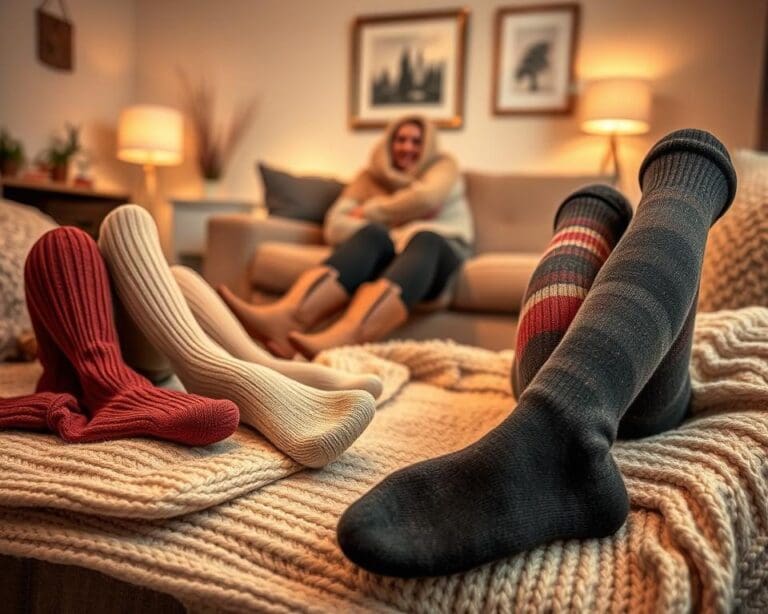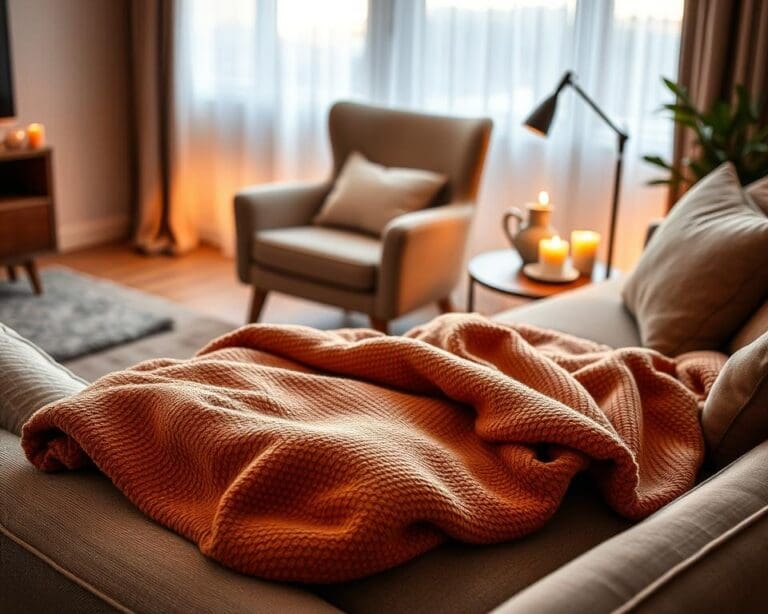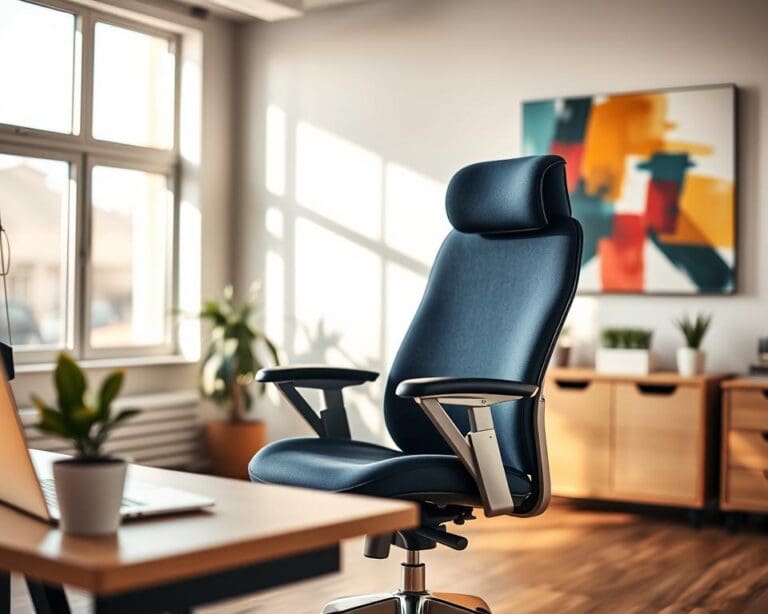Breathing new life into old furniture is not only a creative outlet, but it also contributes to a more sustainable lifestyle. By repurposing and upcycling, we can reduce waste and give our homes a unique touch. Whether it’s through DIY furniture restoration or finding new uses for old items, the possibilities are endless.
For those looking to embark on this eco-friendly journey, there are numerous ways to start. You can explore various ideas for repurposing old furniture, from painting and reupholstering to creating entirely new pieces from old components. This not only helps in reducing landfill waste but also adds a personal touch to your living space.
Key Takeaways
- Repurposing old furniture reduces waste and supports sustainable living.
- DIY restoration projects can be a fun and creative way to give old furniture a new life.
- Using eco-friendly materials in your restoration projects further enhances sustainability.
- Old furniture can be transformed into unique decorative pieces with a little creativity.
- Sustainable living through furniture repurposing is both cost-effective and environmentally friendly.
The Value of Repurposing Old Furniture
Giving old furniture a new life is not just a trend; it’s a movement towards sustainability. As we become more environmentally conscious, the practice of upcycling furniture has gained popularity. But the benefits of repurposing old furniture extend beyond just being eco-friendly.
Environmental Benefits
One of the most significant advantages of repurposing old furniture is its positive impact on the environment. By giving old furniture a new life, we reduce the amount of waste sent to landfills. This is particularly important as furniture can take decades to decompose. Moreover, repurposing furniture reduces the demand for new raw materials, thus conserving natural resources and minimizing the environmental footprint associated with manufacturing new furniture.
Key environmental benefits include:
- Reducing landfill waste
- Conserving natural resources
- Lowering the carbon footprint associated with new furniture production
Economic Advantages
Repurposing old furniture also has economic benefits. Upcycling or refinishing old furniture can be significantly cheaper than buying new. This approach not only saves money but also adds value to your home. Well-restored furniture can increase a home’s value, making it more attractive to potential buyers if you decide to sell.
Economic advantages include:
- Cost savings compared to buying new furniture
- Increased home value through quality restoration
- Potential to sell restored pieces for profit
Personal Satisfaction of DIY Projects
Engaging in DIY furniture restoration projects can be incredibly rewarding. The process allows individuals to express their creativity, develop new skills, and experience a sense of accomplishment upon completing a project. Whether it’s restoring a vintage piece or giving a new look to an old favorite, the personal satisfaction derived from these projects is invaluable.
Benefits of DIY restoration include:
- Personal expression and creativity
- Skill development
- A sense of accomplishment
Assessing Your Old Furniture’s Potential
The journey to reviving old furniture begins with assessing its potential. Before diving into a renovation project, it’s essential to evaluate whether a piece is worth restoring. This involves examining several key factors that determine its potential for transformation.
Evaluating Structural Integrity
When assessing the structural integrity of your old furniture, look for signs of damage or wear. Check for loose joints, cracks, or broken parts. Ensure that the frame is sturdy and can support the weight it’s intended for. For instance, if you’re dealing with a chair, test its legs and joints to see if they can hold weight without collapsing.
Inspect the furniture for any signs of previous repairs or reinforcements. While these can be indicative of potential issues, they can also be a sign of well-maintained furniture. Pay particular attention to the condition of the drawers, shelves, and any moving parts.
Identifying Quality Materials
Furniture made from high-quality materials is more likely to be worth restoring. Solid wood, for example, is generally more valuable than engineered wood or particleboard. Check the construction materials by inspecting the type of wood used, the thickness of the materials, and the overall build quality.
Look for details such as dovetail joints, which are indicative of high-quality craftsmanship. The presence of such features can significantly increase the value and potential of the piece.
Recognizing Vintage Value
Vintage furniture can be highly valuable, not just for its aesthetic appeal but also for its historical significance. Research the era and style of your furniture to understand its potential vintage value. Look for signs of age, such as patina, which can add character to a piece.
Consider consulting with antique dealers or using online resources to determine the value of your vintage furniture. Understanding its historical context can help you make informed decisions about restoration.
Deciding What’s Worth Saving
Not all old furniture is worth restoring. Consider the cost of materials, the time required for restoration, and the potential outcome. Weigh these factors against the piece’s original value and its value after restoration.
Ultimately, the decision to restore should be based on the piece’s sentimental value, its potential for transformation, and its potential resale value. By carefully assessing these factors, you can make informed decisions about which pieces to restore and how to approach the renovation.
Essential Tools and Materials for Furniture Restoration
To breathe new life into old furniture, you’ll need a well-stocked toolkit and the right materials. Furniture restoration is a multifaceted process that involves repairing, refinishing, and sometimes reupholstering. Having the correct tools and materials not only makes the job easier but also ensures a professional finish.
Basic Tool Kit Essentials
A basic tool kit is the foundation of any furniture restoration project. Essential tools include:
- Claw hammer: For pulling nails and general demolition.
- Tape measure: For measuring pieces and ensuring accuracy.
- Screwdrivers (flathead and Phillips): For driving screws and other fasteners.
- Pliers: For gripping and bending various objects.
- Sanding block: For smoothing out wood surfaces.
Finishing Materials
The finish you choose can dramatically affect the final appearance of your restored furniture. Common finishing materials include:
- Stains: To enhance the color and grain of the wood.
- Polyurethane: A clear coat to protect the wood and give it a glossy finish.
- Paint: For a completely new look or to cover up old finishes.
- Wax: To add a layer of protection and sheen.
| Material | Use | Characteristics |
|---|---|---|
| Stain | Enhance wood color and grain | Available in various colors, can be oil or water-based |
| Polyurethane | Protect wood and add gloss | Clear coat, water or oil-based, durable |
| Paint | Change the look or cover old finishes | Available in many colors, can be latex or oil-based |
Safety Equipment
Safety should never be compromised when working on DIY projects. Essential safety equipment includes:
- Safety goggles: To protect your eyes from debris and chemicals.
- Dust mask: To prevent inhalation of dust and fumes.
- Gloves: To protect your hands from splinters, cuts, and chemicals.
- Work apron: To keep your clothes clean and protected.
Where to Find Affordable Supplies
Finding affordable supplies is crucial for keeping your project within budget. Consider the following sources:
- Local hardware stores: For a wide range of tools and materials.
- Online retailers: Often offer competitive pricing and a vast selection.
- Thrift stores and garage sales: For second-hand tools and materials.
- Repurposing old materials: From other projects or items you no longer need.
By equipping yourself with the right tools and materials, you’ll be well on your way to successfully restoring your furniture. Remember, the key to a great restoration is attention to detail and patience.
Preparing Your Furniture for Transformation
The key to a successful furniture restoration project lies in the preparation phase. Proper preparation ensures that your furniture is ready for the transformation process, whether you’re refinishing, repainting, or reupholstering.
Cleaning Techniques
Before you start any restoration work, it’s crucial to clean your furniture thoroughly. Use a gentle cleaner suitable for the type of material your furniture is made of. For wooden furniture, a mixture of soap and water can be effective, while for upholstered pieces, a fabric cleaner is more appropriate.
Tips for Effective Cleaning:
- Use soft cloths to avoid scratching the surface.
- Test the cleaner on a small, inconspicuous area first.
- Avoid using harsh chemicals that can damage the material.
Disassembly Tips
Some furniture pieces may require disassembly before you can start the restoration process. This could involve removing knobs, handles, or even taking apart certain components.
Steps for Safe Disassembly:
- Take photos as you disassemble to help with reassembly.
- Keep all screws, bolts, and other hardware in labeled bags.
- Consult the manufacturer’s manual if available.
Surface Preparation
Surface preparation is critical for ensuring that your restoration work adheres well and looks great. This may involve sanding down wooden surfaces or cleaning and preparing upholstered areas.
Surface Preparation Techniques:
| Material | Preparation Technique |
|---|---|
| Wood | Sanding with progressively finer grits |
| Upholstery | Cleaning with fabric cleaner, drying completely |
| Metal | Cleaning with a metal cleaner, removing rust |
Creating a Proper Workspace
Having a well-organized workspace is essential for efficient and safe restoration work. Ensure your workspace is well-ventilated, well-lit, and free from clutter.
Tips for an Effective Workspace:
- Use a workbench or a stable surface.
- Keep tools and materials organized and within reach.
- Ensure good lighting to see details clearly.
Refinishing Wooden Furniture
Transforming outdated wooden furniture into beautiful, functional pieces is a satisfying endeavor for any DIY enthusiast. With the right techniques and materials, you can give old furniture a new life, enhancing both its appearance and durability.
Stripping Old Finishes
The first step in refinishing wooden furniture is stripping the old finish. This can be done using chemical strippers or by sanding. Chemical strippers are effective but require careful handling and proper ventilation.
When using chemical strippers, apply the product to the surface and let it sit for the recommended time. Then, scrape off the old finish with a putty knife. Be sure to follow all safety precautions, including wearing gloves and protective eyewear.
Sanding Techniques
Sanding is a crucial step in the refinishing process. It helps smooth out the surface, removing any remaining old finish and preparing the wood for staining or painting.
- Start with coarse-grit sandpaper (about 80-100 grit) to remove the old finish and smooth out the wood.
- Progress to finer grits (120-150 grit) for a smoother finish.
- Always sand with the grain to avoid scratches.
Repairing Wood Damage
Before applying a new finish, any damaged areas should be repaired. This can include filling dents or scratches with wood filler and replacing damaged hardware.
| Repair Type | Materials Needed | Steps |
|---|---|---|
| Filling Dents/Scratches | Wood filler, sandpaper | Apply filler, let dry, sand smooth |
| Replacing Hardware | New hardware, screwdriver | Remove old hardware, install new |
Applying New Stains and Finishes
Once the surface is prepared, you can apply a new stain or finish. Choose a product that suits your desired outcome, whether it’s to enhance the natural color of the wood or to add a bold new color.
Tips for Applying Stains and Finishes:
- Always test the stain or finish on a small, inconspicuous area first.
- Apply the product according to the manufacturer’s instructions.
- Allow the finish to dry completely before applying additional coats or using the furniture.
By following these steps and techniques, you can successfully refinish your wooden furniture, giving it a new lease on life.
Reupholstering Techniques for Chairs and Sofas
Reupholstering old furniture is not just eco-friendly; it’s also a great way to add a personal touch to your home decor. With the right techniques and materials, you can transform your worn-out chairs and sofas into beautiful, functional pieces that reflect your style.
Fabric Selection Guide
Choosing the right fabric is crucial for a successful reupholstering project. Consider factors like durability, texture, and color to ensure your new upholstery is both stylish and practical.
- Durability: Opt for fabrics with a high rub count for heavy-use areas.
- Texture: Velvet, linen, and cotton are popular choices for their unique textures and aesthetic appeal.
- Color: Select colors that complement your existing decor or use this opportunity to introduce a bold new hue.
| Fabric Type | Durability | Aesthetic Appeal |
|---|---|---|
| Velvet | High | Luxurious, elegant |
| Linen | Medium | Natural, textured |
| Cotton | Medium | Versatile, easy to clean |
Step-by-Step Reupholstering Process
The reupholstering process involves several key steps, from removing the old upholstery to attaching the new fabric. Here’s a simplified guide:
- Remove the old upholstery, taking care to preserve the underlying structure.
- Inspect and repair any damaged areas of the chair or sofa frame.
- Cut and fit the new fabric, ensuring a snug and even fit.
- Attach the fabric using a staple gun or upholstery tacks, working from the center outwards.
Adding Modern Touches to Classic Pieces
To give your reupholstered furniture a modern twist, consider incorporating contemporary elements like bold patterns or contrasting piping.
Tip: Mixing modern fabrics with traditional furniture pieces can create a unique and captivating look.
No-Sew Upholstery Options
For those without sewing skills or preferring a quicker solution, no-sew upholstery options are available. Adhesive tapes and fabric glue can be used to secure fabric in place, although these methods may not be as durable as traditional sewing.
Reupholstering your chairs and sofas is a rewarding DIY project that not only gives new life to old furniture but also allows you to express your creativity and personalize your living space.
Painting Techniques to Transform Furniture
With the right painting techniques, you can turn outdated furniture into beautiful, unique pieces for your home. Painting is a versatile and cost-effective way to give old furniture a new life, and it’s a project that can be undertaken by DIY enthusiasts of all skill levels.
Choosing the Right Paint
Selecting the appropriate paint for your furniture is crucial for a successful transformation. Consider the material of your furniture: for wooden pieces, a high-quality latex or oil-based paint is recommended. For metal furniture, look for paints specifically designed for metal surfaces, as they provide better adhesion and durability.
When it comes to the finish, you have several options, including matte, satin, and gloss. The choice depends on the desired look and the level of durability you need. For instance, a satin finish is a popular choice because it offers a nice sheen without being too shiny.
Popular Paint Types for Furniture:
- Latex paint for a durable, water-resistant finish
- Oil-based paint for a smooth, classic look
- Chalk paint for a vintage, distressed appearance without primer
- Spray paint for a quick, even coat on metal and other surfaces
Distressing and Antiquing Methods
Distressing and antiquing are techniques used to give furniture a worn, vintage look. To distress furniture, you’ll typically use sandpaper to wear away the paint in areas that would naturally get more wear, such as edges and corners.
Antiquing involves using a glaze or a darker paint to create shadows and accents that enhance the aged look. This can be applied with a brush or a cloth, depending on the desired effect.
“The art of distressing is not just about making something look old; it’s about creating a story on the surface of the furniture.” –
| Technique | Description | Best For |
|---|---|---|
| Sandpaper Distressing | Using sandpaper to wear away paint | Edges, corners, and surfaces |
| Glaze Antiquing | Applying a glaze to create shadows | Detailed areas, carvings, and crevices |
Creating Decorative Patterns
Adding decorative patterns can elevate your furniture from simple to stunning. Techniques include stenciling, freehand painting, and decoupage. Stencils are great for achieving precise designs, while freehand painting allows for more creativity and personal expression.
Decoupage involves gluing cut-out images onto the furniture and then sealing them with a clear coat. This method can add a unique, personal touch to your pieces.
Sealing and Protecting Painted Surfaces
Once you’ve painted and decorated your furniture, it’s essential to seal the surface to protect it from wear and tear. A clear coat of polyurethane or varnish can be applied to achieve this. The choice between water-based and oil-based sealers depends on the type of paint used and the desired level of sheen.
Tips for Sealing:
- Apply thin coats to avoid drips and unevenness
- Allow each coat to dry completely before applying the next
- Consider using a water-based sealer for easier clean-up
By following these painting techniques, you can transform your old furniture into beautiful, functional pieces that add character to your home.
Hoe geef je oude meubels een tweede leven? Creative Approaches
Giving old furniture a second chance is not just about restoration; it’s about reimagining its purpose and style. With a dash of creativity, you can transform outdated pieces into unique elements that add character to your home.
Repurposing Furniture for New Functions
One of the most exciting aspects of furniture upcycling is repurposing old pieces for new functions. For instance, an old ladder can become a bookshelf, or a vintage door can be turned into a coffee table. The key is to see beyond the original use and envision something new.
Consider the story of a homeowner who turned an old wooden dresser into a kitchen island. By adding casters and a butcher-block top, they created a functional and stylish piece that became the centerpiece of their kitchen.
Combining Different Furniture Pieces
Combining different furniture pieces is another creative way to give old furniture a new life. For example, merging two old nightstands into a single, unique bench or combining the drawers of an old dresser with a vintage table top to create a one-of-a-kind storage unit.
“The art of upcycling is not just about saving old furniture; it’s about creating something new and meaningful.”
Adding Decorative Elements
Adding decorative elements can elevate your upcycled furniture from functional to fabulous. Consider adding new hardware, painting, or decoupage to give your piece a personalized touch.
- Update the hardware with modern knobs or handles.
- Use stencils or freehand painting to add unique designs.
- Apply decoupage techniques with cut-out images or prints.
Upcycling Ideas for Various Home Styles
Upcycling can fit into any home style, from modern minimalist to vintage eclectic. For a modern look, focus on clean lines and monochromatic colors. For a vintage vibe, incorporate distressed finishes and antique hardware.
For example, in a modern home, an upcycled glass-door cabinet can add a touch of elegance, while in a rustic setting, a reclaimed wood bench can bring warmth and coziness.
By embracing creative upcycling, you not only give old furniture a new life but also contribute to a more sustainable lifestyle. As the saying goes, “One man’s trash is another man’s treasure.” With a little creativity, you can turn old furniture into treasures that reflect your personal style and enhance your home decor.
Budget-Friendly Restoration Strategies
Budget-friendly restoration is all about being resourceful and finding affordable ways to breathe new life into old furniture. Whether you’re a seasoned DIY enthusiast or just starting out, there are numerous strategies to help you restore furniture without breaking the bank.
Sourcing Affordable Materials
One of the key aspects of budget-friendly restoration is sourcing materials at a low cost. Consider visiting:
- Local thrift stores and charity shops for hidden gems
- Online marketplaces and apps for second-hand furniture
- Estate sales and garage sales for underpriced items
- Habitat for Humanity ReStores for donated building materials
By exploring these options, you can find quality materials at a fraction of the cost of new supplies.
DIY Alternatives to Expensive Products
Instead of buying expensive restoration products, consider making your own DIY alternatives. For instance:
- Make your own wood stain using coffee or tea
- Create a natural wax finish using beeswax and linseed oil
- Use household items like baking soda and vinegar for cleaning
These DIY solutions not only save money but also offer a more sustainable approach to restoration.
Prioritizing Projects by Cost-Benefit
Not all restoration projects are created equal. Prioritize projects based on their potential return on investment, considering factors like:
- The cost of materials and tools needed
- The potential increase in value or functionality
- The time and effort required
By focusing on projects with a high cost-benefit ratio, you can maximize your budget and achieve the most impactful results.
Selling Restored Pieces for Profit
If you’re looking to offset the costs of your restoration projects or even turn a profit, consider selling your restored pieces. You can:
- Sell online through platforms like eBay, Craigslist, or Facebook Marketplace
- Participate in local flea markets or antique shows
- List your items on consignment at local antique stores
By selling your restored furniture, you can recoup your investment and fund future projects.
Transforming Specific Furniture Types
The art of transforming furniture is not just about restoring; it’s about reimagining the potential in every piece, from tables to unusual items. Different furniture types present unique challenges and opportunities for creative renovation. Whether you’re dealing with a worn-out dresser or an outdated chair, the key to successful transformation lies in understanding the characteristics of each piece and applying the right techniques.
Dressers and Cabinets
Dressers and cabinets are among the most common furniture pieces that can benefit from transformation. Often, these pieces have sturdy structures that can be refinished or repurposed. To give an old dresser a modern look, consider replacing the hardware with new knobs or handles and applying a fresh coat of paint or stain.
- Assess the condition of the drawers and replace any damaged glides or runners.
- Use a fresh coat of paint or stain to update the finish.
- Consider adding decorative elements like molding or trim.
Tables and Desks
Tables and desks are versatile pieces that can be easily transformed to fit modern decor. A simple approach is to update the surface with a new finish or by adding a glass top. For a more dramatic change, consider altering the shape or adding new legs.
| Transformation Idea | Materials Needed | Skill Level |
|---|---|---|
| Refinishing the Surface | Sandpaper, stain or paint, polyurethane | Intermediate |
| Adding a Glass Top | Glass, adhesive, safety gear | Advanced |
| Replacing the Legs | New legs, screws, drill | Beginner |
Chairs and Seating
Chairs and other seating options can be transformed with reupholstering or by applying a fresh coat of paint. For wooden chairs, consider stripping the old finish and applying a new stain or paint. Upholstered chairs can be re-covered with new fabric, offering a chance to update the style and comfort.
- Remove the old upholstery and inspect the frame for repairs.
- Choose a durable, stylish fabric that complements your decor.
- Consider adding new padding for improved comfort.
Unusual or Outdated Pieces
Some furniture pieces are truly one-of-a-kind or have fallen out of favor due to changing decor trends. These pieces can be the most rewarding to transform, as they offer a blank canvas for creativity. Think outside the box when dealing with unusual items, and consider how they can be repurposed or reimagined.
For example, an old door can be turned into a coffee table, or a vintage ladder can be used as a unique shelving unit. The possibilities are endless, and the process can be a fun and creative DIY project.
Troubleshooting Common Restoration Challenges
Furniture restoration is a journey that often involves overcoming various obstacles, from structural damage to upholstery issues. As you work on giving old furniture a new life, you’ll likely encounter a range of challenges that require patience, creativity, and sometimes, professional expertise.
Dealing with Structural Damage
Structural damage is one of the most significant challenges in furniture restoration. It can manifest as broken legs, cracked shelves, or weakened joints. To address these issues, you’ll need to assess the extent of the damage and decide on the best repair strategy.
Repairing Broken Joints: For broken joints, you can use wood glue and clamps to reinforce the bond. In some cases, adding dowels or screws can provide additional strength.
Rebuilding Damaged Sections: If a section of the furniture is severely damaged, you may need to rebuild it entirely. This involves carefully removing the damaged part, measuring and cutting a new piece to fit, and securing it in place.
Fixing Veneer and Laminate Issues
Veneer and laminate problems can be particularly frustrating, as they often result in unsightly bubbles, peeling, or delamination. To fix these issues, you’ll need to understand the cause and apply the appropriate repair technique.
- For veneer bubbles, carefully slit the bubble with a utility knife, inject adhesive, and clamp until dry.
- For peeling laminate, clean the area, apply a suitable adhesive, and press the laminate back into place, clamping until the adhesive sets.
Addressing Upholstery Problems
Upholstery issues, such as torn fabric, sagging springs, or worn-out padding, require a different set of skills and materials. Whether you’re reupholstering an entire piece or making targeted repairs, it’s essential to choose the right fabric and techniques.
Reupholstering Basics: Start by removing the old upholstery, taking note of how it was constructed. Then, use this as a guide to cut and fit your new fabric, ensuring a snug and secure fit.
When to Call in Professional Help
While many restoration tasks can be tackled as DIY projects, there are times when calling in a professional is the best course of action. If you’re dealing with intricate antique pieces, complex structural repairs, or if you’re unsure about the best approach, seeking professional help can save time, money, and ensure a high-quality outcome.
Assessing Your Limits: Be honest about your skills and experience. If a project is beyond your capabilities, it’s better to consult a professional than to risk damaging the piece further.
Conclusion
Repurposing old furniture is a rewarding way to contribute to sustainable living while creating unique pieces for your home. By assessing, restoring, and creatively reusing old furniture, you not only reduce waste but also add character to your living space.
The process involves evaluating the structural integrity and quality of materials, applying various restoration techniques, and adding a personal touch to each piece. Whether you’re refinishing wooden furniture, reupholstering chairs, or painting to transform the look, every step brings you closer to a more sustainable lifestyle.
As you’ve learned through this article, repurposing old furniture can be a cost-effective and environmentally friendly way to refresh your home decor. So, take the first step today, and breathe new life into your old furniture. Start your restoration journey and discover the satisfaction of giving old pieces a new purpose.













